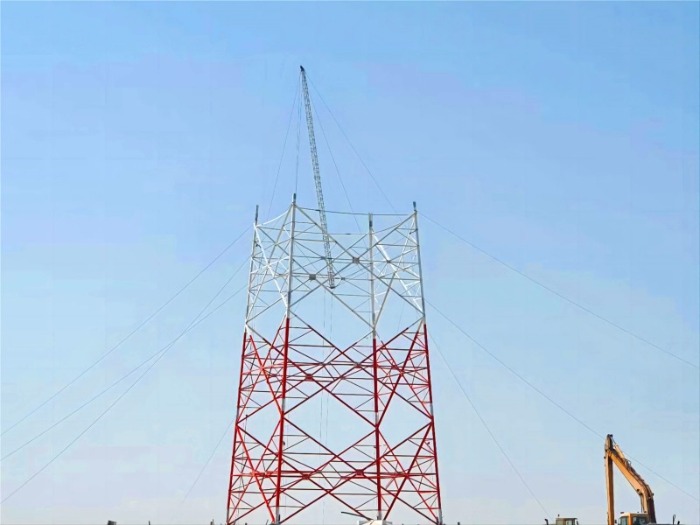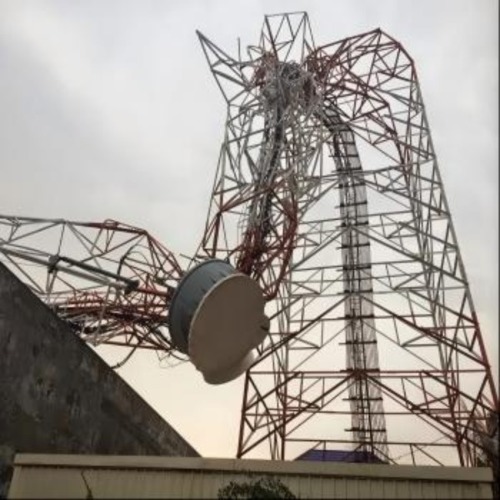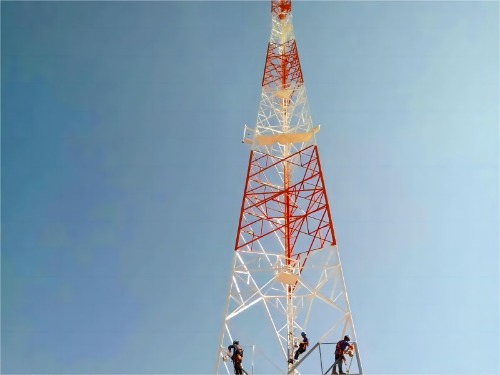Beyond 80 Meters: Pushing Height Limits with 4-Legged Angle Steel Tower Designs
As telecommunications networks evolve to support 5G and future generations of wireless technology, the demand for taller towers continues to grow. While conventional towers typically max out around 80 meters, next-generation networks require structures that can reach 100 meters and beyond. Enter the 4-legged angle steel tower – an engineering solution specifically designed to break through conventional height limitations while maintaining structural integrity and operational reliability.

The Height Challenge: Why Conventional Designs Fail
Traditional tower designs face significant challenges when exceeding 80 meters:
-Exponential increase in bending moments from wind loads
-Buckling risks in compression members
-Dynamic wind effects causing complex vibration patterns
-Foundation stability concerns under combined loading conditions
The transition from 80 to 100+ meters represents more than just adding height – it requires a fundamental rethinking of structural principles and load management strategies.

Four-Legged Configuration: The Structural Advantage
The quadrilateral geometry of 4-legged towers provides distinct advantages for extreme-height applications:
Enhanced Stability Mechanism
-Wider base dimensions create significantly larger resisting moments
-Redundant load paths distribute stresses more efficiently than three-legged designs
-Superior torsional rigidity prevents twisting under asymmetric loading
-Progressive failure prevention through multiple redundant members
Material Efficiency
-Optimized bracing patterns maximize strength-to-weight ratios
-Segmented construction allows for varying cross-sections along the height
-Strategic member sizing places heavier sections where stress concentrations occur
Critical Technical Considerations for 100+ Meter Towers
Advanced Buckling Analysis
Traditional Euler buckling calculations prove insufficient for ultra-tall towers. Our engineering approach incorporates:
-Non-linear finite element analysis to predict complex buckling modes
-Initial imperfection sensitivity studies accounting for fabrication tolerances
-Local-global interaction buckling assessment for compression members
-Dynamic buckling evaluation under wind-induced vibrations
Wind Engineering Innovations
At heights exceeding 80 meters, wind behavior becomes increasingly complex:
-Aeroelastic effects requiring specialized damping systems
-Wind speed gradient modeling across the tower height
-Vortex shedding mitigation through helical strakes or tuned mass dampers
-Directional wind analysis for site-specific loading conditions
Non-Linear Dynamic Response
Our design methodology addresses several critical dynamic phenomena:
-Galloping instability prevention through member shape optimization
-Wake-induced vibrations in multi-tower configurations
-Rain-wind induced vibrations and their mitigation
-Seismic-wind combination effects for regions with multiple hazards
Foundation Engineering for Extreme Heights
The foundation system for 100+ meter towers represents one of the most critical design elements:
Soil-Structure Interaction
-Deep foundation solutions using large-diameter bored piles
-Pile group efficiency optimization for lateral load resistance
-Soil-structure interaction modeling to accurately predict deformations
-Uplift resistance mechanisms using underreamed piles or rock anchors
Advanced Foundation Types
-Raft foundations with integrated pile systems for difficult soil conditions
-Rock-socketed foundations in mountainous terrain
-Slab-base designs with ground improvement techniques
-Multi-level foundation systems for sloped sites
Case Study: 118-Meter Tower Project
A recent project demonstrates our approach to extreme-height tower design:
Project Specifications
Height: 118 meters
Location: Coastal region with high wind speeds
Loading: Multiple carrier antennas + microwave links
Design life: 50 years
Technical Solutions Implemented
-Hybrid bracing system combining K-bracing and X-bracing patterns
-Tuned mass damper at 95-meter level for vibration control
-Rock-anchored foundation with 32-meter deep piles
-Progressive member sizing with heavier angles at lower sections
Performance Results
-Natural frequency: 0.45 Hz, well separated from vortex shedding frequencies
-Peak acceleration: <15 mg under 50-year wind conditions
-Foundation settlement: <12 mm after 2 years of monitoring

Material and Fabrication Innovations
High-Strength Steel Applications
- -Q420 steel (yield strength 420 MPa) for critical compression members
- -Hybrid construction using varying steel grades based on stress requirements
- -Cold-formed angles with enhanced buckling resistance
Advanced Connection Design
-High-strength bolting with pre-tensioned connections
-Moment-resistant joints at key structural intersections
-Slip-critical connections for fatigue-sensitive locations
Monitoring and Maintenance Considerations
Ultra-tall towers require specialized monitoring systems:
-Structural health monitoring with strain gauges and accelerometers
-Foundation settlement monitoring using precision instruments
-Corrosion protection systems with enhanced coating specifications
-Robotic inspection systems for difficult-to-access areas
Future Directions: Beyond 150 Meters
The engineering frontier continues to advance with several emerging technologies:
-Composite materials combining steel with carbon fiber elements
-Active damping systems using real-time response control
-Digital twin technology for predictive maintenance
-Adaptive structures that modify their properties in response to loading
Conclusion: Engineering Without Height Limits
The 4-legged angle steel tower design represents a proven solution for pushing beyond the conventional 80-meter barrier. Through advanced buckling analysis, sophisticated wind engineering, and innovative foundation design, these structures can safely reach 100+ meters while maintaining operational reliability.
As network demands continue to evolve, the ability to build higher will remain crucial for providing comprehensive coverage and capacity. The 4-legged configuration, with its inherent stability and redundant load paths, provides the engineering foundation for these next-generation towers.
Learn more at www.alttower.com

.jpg)
.jpg)
评论
发表评论